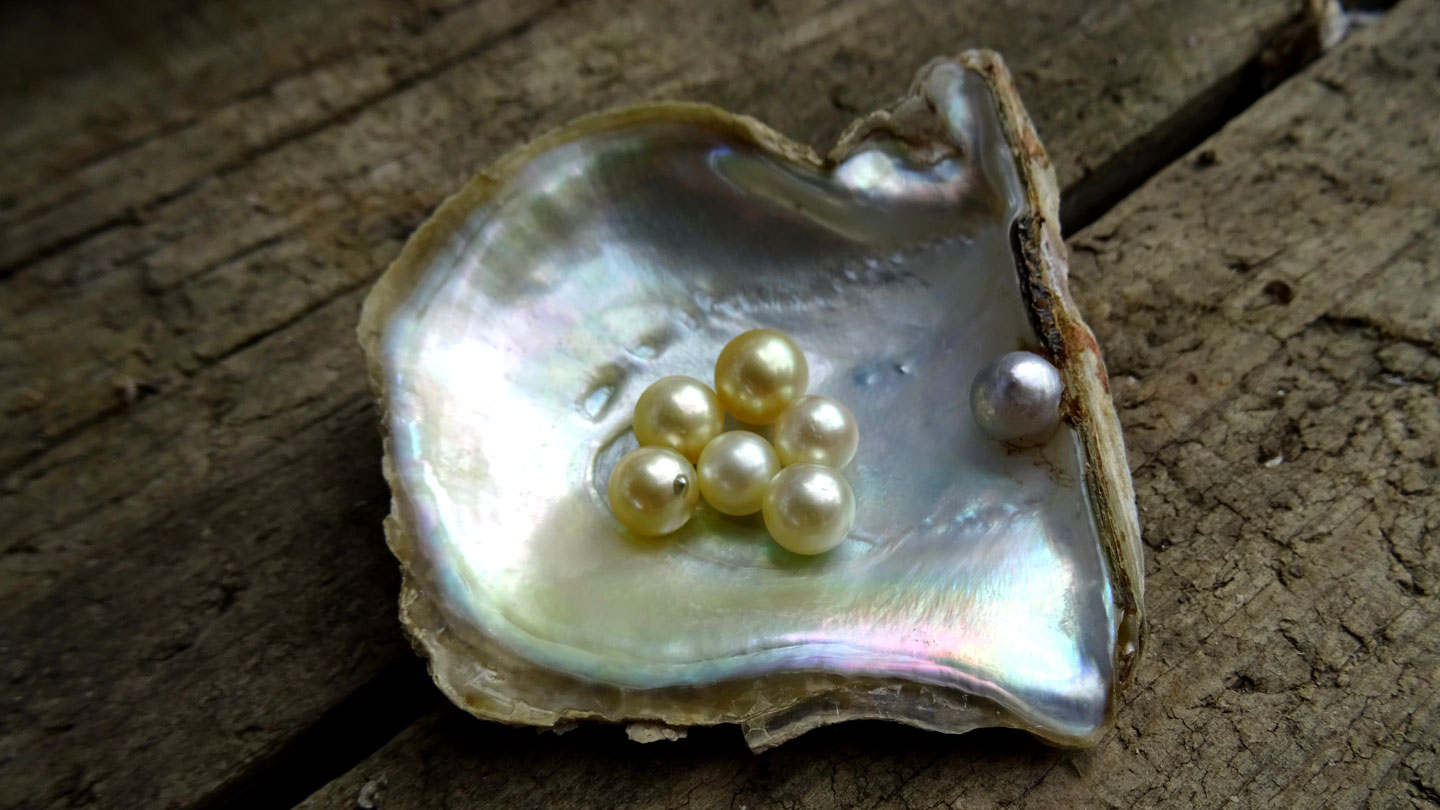Researchers have unlocked the secret to pearls’ incredible symmetry
For centuries, researchers have puzzled over how oysters grow stunningly symmet

For centuries, researchers have puzzled over how oysters grow stunningly symmetrical, perfectly round pearls around irregularly shaped grains of sand or bits of debris. Now a team has shown that oysters, mussels and other mollusks use a complex process to grow the gems that follows mathematical rules seen throughout nature.
Pearls are formed when an irritant gets trapped inside a mollusk, and the animal protects itself by building smooth layers of mineral and protein — together called nacre — around it. Each new layer of nacre built over this asymmetrical center adapts precisely to the ones preceding it, smoothing out irregularities to result in a round pearl, according to an analysis published October 19 in the Proceedings of the National Academy of Sciences.
“Nacre is this incredibly beautiful, iridescent, shiny material that we see in the insides of some seashells or on the outside of pearls,” says Laura Otter, a biogeochemist at the Australian National University in Canberra.
A pearl’s symmetrical growth as it lays down layers of nacre relies on the mollusk balancing two basic capabilities, Otter and her colleagues discovered. It corrects growth aberrations that appear as the pearl forms, preventing those variations from propagating over the pearl’s many layers. Otherwise, the resulting gem would be lopsided.
The analysis revealed that fluctuations in the thicknesses of the pearls’ layers of nacre exhibit a phenomenon called 1/f noise, or pink noise, in which events that appear to be random are actually connected. In this case, the formation of nacre layers of different thicknesses may appear random, but is actually dependent on the thickness of previous layers. The same phenomenon is at work in seismic activity: The rumbling of the ground seems random, but is actually connected to previous recent seismic activity. Pink noise also crops up in classical music and even when monitoring heartbeats and brain activity, says coauthor Robert Hovden, a materials scientist and engineer at the University of Michigan in Ann Arbor. These phenomena “belong to a universal class of behavior and physics,” Hovden says.
This is the first time that researchers have reported “that nacre self-heals and when a defect arises, it heals itself within a few [layers], without using an external scaffolding or template,” says Pupa Gilbert, a physicist studying biomineralization at the University of Wisconsin–Madison who wasn’t involved with the study. “Nacre is an even more remarkable material than we had previously appreciated.”
Notes Otter: “These humble creatures are making a super light and super tough material so much more easily and better than we do with all our technology.” Made of just calcium, carbonate and protein, nacre is “3,000 times tougher than the materials from which it’s made of.”
This new understanding of pearls, Hovden adds, could inspire “the next generation of super materials,” such as more energy-efficient solar panels or tough and heat-resistant materials optimized for use in spacecraft.
Tags:Researchers,have,




